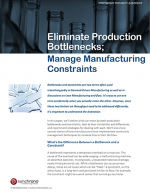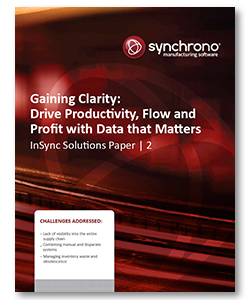Gaining Clarity: Drive Productivity, Flow and Profit with Data that Matters
Many of today’s discrete manufacturers are overcoming the challenges of legacy push-based systems by turning to pull-based eKanban systems that focus on throughput and flow and result in a reduction in costs and inventory.
The Manufacturing Imperative: Enabling Greater Productivity Through Instant Insight
Manufacturers are under pressure to deliver high-quality products and services more quickly than ever before. To achieve velocity and gain competitive advantage, manufacturers need to better communicate and collaborate with the many individuals and organizations that make up the supply chain. Globalization of manufacturers’ supply chains means that they have to work with suppliers across multiple languages, time zones, and currencies, while also working leaner and faster to deliver their products.
In addition to potential international barriers, there are also technical challenges in trying to gain real-time visibility into the supply chain. Manufacturers find themselves forced to integrate disparate systems, some of which are legacy or inherited through mergers or acquisitions.
"To address globalization challenges, advanced organizations are exploring the advantages of connecting people to the information they need in order to control assets and supply chain processes in real time,” says Enrique Andaluz, Microsoft's industry solution manager, worldwide discrete manufacturing. Achieving success through better connectivity to a sensor-enabled supply chain also means that the amount of information collected today has grown exponentially. However, the extreme amount of data growth has not led to a parallel growth in actionable information.
The first white paper in this series, Gaining Control: Exploring Push v Pull Manufacturing covered the nature of Push- and Pull-based systems and, more specifically, manual and eKanban systems within a Pull environment. We explored environments that range from planning-centric push of inventory and data for execution to a customer-centric pull of inventory and data. We discussed both the manual and eKanban approaches, and how these pull techniques bring control to the planning and execution process in lean manufacturing supply chains.
What’s Related




Favorites





